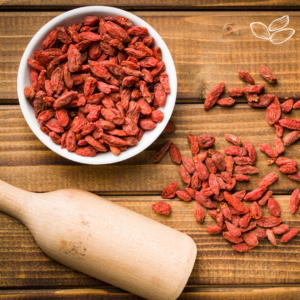16 Nov Goji berries are not raisins. What are they?
Dried goji berries may look like a group of raisin-like fruit, but they’re actually loaded with nutrients. In fact, these sweet and tart jewels make regular appearances on the Instagrams of popular health food bloggers such as Hemnesley & My New Roots! What makes them so special? You’ll find out here in this guide to eating or cooking Gojis right from start to finish – including what kind will work best for you depending upon your needs (and preferences).
What You Need to Know
Goji berries are the nutritional equivalent of a vitamin-packed juice box. They’re rare in North America, but not if you frequent your local health food store! Gojis come both dried and fresh—the latter being used for medicinal purposes by indigenous people around Asia since at least 2 thousand years ago.

How to Eat Them
You can cook with dried goji berries in both sweet and savory recipes. The easiest way to get started is by using them like raisins, putting them into cookies or oatmeal for a delicious treat! You may also consider soaking the fruit before rehydrating it–it will taste almost exactly as if you had eaten “very sweet cherry tomatoes.
Fold the hydrated berries into your favorite dish to make it more delicious, or blend them with other ingredients like fruit juice for a fantastic smoothie. Some people find that dried goji berry powder makes preparation of sauces and dressings easier than using fresh strawberries alone; they also love adding this power packed plant into their kitchens every day!
Health Benefits
The good news is that you don’t need to take any of this misinformation seriously. Yes, goji berries are full of phytochemicals and they’re rich in vitamins A & C; however there’s no scientific proof which shows how these health benefits can be achieved by eating one or two berry servings per day (especially when most people eat much more than this). What we do know for sure though? Goji fruit packs plenty more nutritionals like manganese which helps regulate hormone levels within our bodies!
Buying Tips
When purchasing dried goji berries, look for packages that do not contain any added sugars or preservatives. Some packages of these fruit are colorfully preserved by the inclusion of chemicals like sulfur dioxide which can make them appear more appetizing than they actually are on taste alone! Additionally, Morris says best quality will be dry but still retain a bit o soft bite similar to raisins- if you’re looking for certified organic options then this information should easily identifiable with certification logos near where it says “organic.”

How to Store
Store your dried goji berries in a cool, dark place (your pantry is just fine). They’ll keep for at least one year though brands that package the fruit with added preservatives may advertise a longer shelf life. Make sure to keep these tasty treats away from moisture and avoid touching them as they can clump together easily!
The best time to eat goji berries
Goji berries are packed full of beneficial nutrients that can help improve your health. They contain antioxidants, vitamins, and minerals such as beta carotene and Vitamin C which have been known to boost the immune system. One way you can get these healthy benefits is by eating goji berries in the morning!
In general, it’s best to eat most fruits or vegetables shortly after waking up so your body has time to digest them before going about the rest of its day. This rule applies for a lot of foods but since goji berries tend to be a bit more fibrous than other types, they’re especially important to have first thing in the morning when digestion may not be at its peak yet.



Sorry, the comment form is closed at this time.